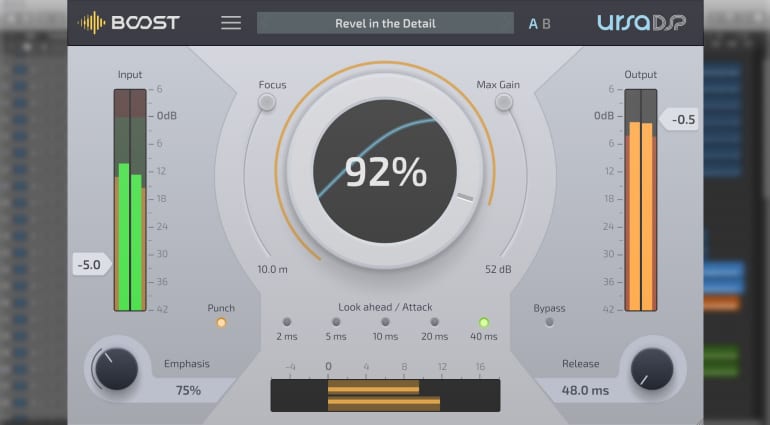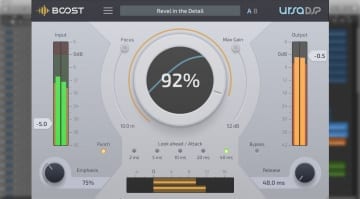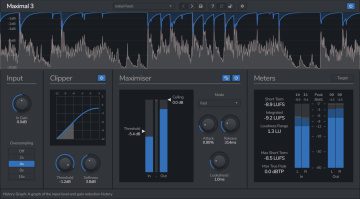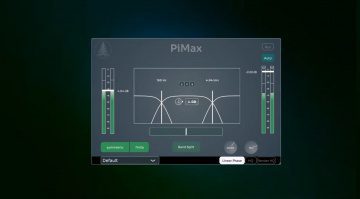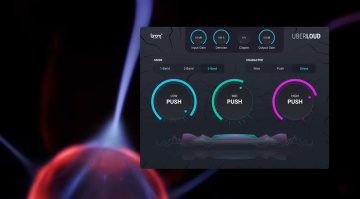Can the UrsaDSP Boost loudness maximizer reveal hidden detail in a mix?
Developer UrsaDSP emerged in 2016 as part of the KVR Developer Challenge, where it introduced its Lagrange delay plug-in. It now has a new release – Boost. Boost is a loudness maximizer with a sleek user interface and some clever algorithm action going behind the scenes.
UrsaDSP Boost – loudness maximizer and transient enhancer
At a glance, Boost works like most loudness maximizers/limiters. Adjust output ceiling, Attack/Release times, then turn the Boost dial until your audio is louder than liftoff! In practice, there is more than meets the eye. UrsaDSP says its Trajectory technology provides optimal signal detection for the maximum possible gain increase without artifacts or loss of fidelity.
Another interesting feature is Upward Maximizing, which is a sort of built-in compressor. With the Focus control, quieter parts of the signal are hit harder than louder parts instead of the loud signals getting peak-limited. UrsaDSP says this results in the ability to reveal quieter sonic detail which could be lost in a dense mix. For example, reverb tails and mechanical noises could be pushed further in volume, if desired. This means Boost can be useful on individual tracks as a loudness and/or transient maximizer, rather than having the master bus as its exclusive domain. Sounds useful, if it works as advertised.
Final touches to the plug-in include a Drive control for added harmonic distortion, a Punch setting for extra-slamming transients, and a Max Gain control which limits the range of maximizing to keep the most quiet sounds unaffected.
All in all, Boost looks like a competent and modern loudness maximizer with an actual whitepaper backing its technological and functional claims. Nice one!
Price and availability
Boost is being sold for an introductory price of GBP 40, down from GBP 60. A 14-day free demo can be tried out. The plug-in is compatible with macOS and Windows computers and available in 64-bit VST3, AudioUnit and AAX formats. VST2 is not supported.
More information
Video
You are currently viewing a placeholder content from YouTube. To access the actual content, click the button below. Please note that doing so will share data with third-party providers.


